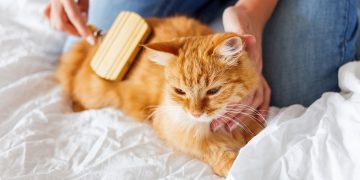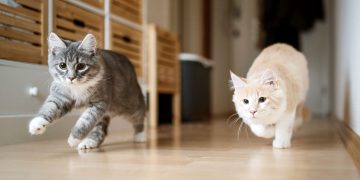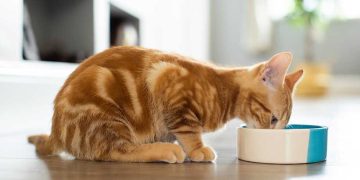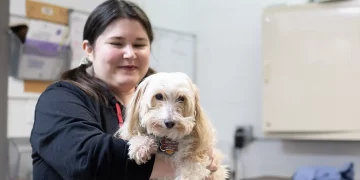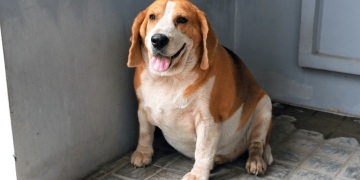The Hidden Struggles Beneath a Fluffy Winter Coat
As winter descends and temperatures drop, our long-haired feline companions don’t just hunker down in warm corners—they undergo a subtle yet significant shift in their coat condition. For breeds like Persians, Maine Coons, Ragdolls, and Norwegian Forest Cats, the cooler months trigger changes in fur density, oil distribution, and skin sensitivity. While these beautiful animals may look more regal and plush than ever during winter, their grooming needs quietly increase in complexity and urgency. Long-haired cats require distinct grooming routines in winter—not just for vanity, but for their comfort, health, and quality of life.
Most cat owners understand the importance of brushing and checking their cat’s coat, but winter introduces new grooming challenges that are often underestimated. As central heating dries out indoor air and outdoor chills cause thicker undercoats, mats, tangles, and dandruff can become routine threats. Without seasonal grooming adaptations, cats can suffer in silence—developing painful skin conditions, ingesting more hair through self-grooming, and becoming irritated or even depressed from the discomfort.
Increased Matting and the Cold-Weather Fur Explosion
One of the most immediate changes in winter is the thickening of a cat’s coat. Even indoor cats experience a level of seasonal coat change, influenced by natural light exposure and temperature variation. Long-haired cats in particular grow a denser undercoat during winter, creating a warm insulating layer to protect against the cold. However, this double coat, though nature’s gift, is a grooming nightmare without vigilance.
Matting increases dramatically in winter, especially behind the ears, around the neck where collars or tags may rub, under the arms, and along the belly where movement causes friction. These mats start as minor tangles but quickly tighten into compact knots that pull on the skin, causing pain and inflammation. Worse still, mats trap dirt, moisture, and shed fur, creating a breeding ground for bacteria and skin infections.
Regular grooming—at least three to four times a week—is essential in winter. Using a wide-tooth comb first helps detangle without yanking, followed by a slicker brush to address finer hairs and undercoat. For problem-prone areas, a mat splitter or grooming rake may be needed. Grooming also acts as a massage, improving circulation and helping your cat relax, especially as the colder weather makes them less active.
Breed-Specific Winter Grooming Considerations
Not all long-haired cats are created equal, and winter coat care must be tailored to breed-specific needs. Persian cats, for example, have incredibly dense coats with fine, cotton-like fur that tangles at the slightest friction. These cats benefit from daily brushing, and owners should prioritize keeping the fur trimmed around the back legs and sanitary areas during winter to prevent clumping with litter or urine.
Maine Coons, with their naturally oily water-resistant coats, need a different approach. Brushing every other day helps distribute natural oils, but over-grooming can strip their protective barrier. During winter, their coats become even thicker and bushier, especially around the mane and tail. Using a pin brush helps preserve coat structure without overworking the skin.
Ragdolls and Siberians, known for their semi-long coats, have surprisingly low-maintenance fur compared to Persians, but their undercoat still thickens during colder months. Regular grooming is essential to prevent sudden matting in areas they can’t easily reach themselves. A grooming mitt combined with a metal comb works well to reduce shedding without irritating the skin.
Even hybrid or mixed breeds with long hair may have unpredictable coat behaviors in winter. Owners should pay attention to changes in coat density, the amount of hair collected during grooming sessions, and any signs of discomfort when brushing. Tailoring grooming tools and frequency based on observed changes will help maintain coat health and feline contentment.
Preventing Skin Problems Before They Start
Neglecting winter grooming doesn’t just lead to mats—it also opens the door to dry skin, rashes, and infections. Cold outdoor air and dry heated indoor environments can dehydrate both your cat’s skin and coat. In long-haired cats, flakes of dry skin often go unnoticed under the layers of fur until they begin scratching excessively or develop scabs.
One way to protect skin health is by using grooming tools that avoid breakage and static buildup. Natural-bristle brushes and grooming gloves reduce hair friction, while anti-static sprays formulated for cats can help manage flyaway fur. For extremely dry conditions, a humidifier in your home can ease both your cat’s and your own skin discomfort during winter.
Bathing should be rare, as frequent bathing strips natural oils and worsens dryness. If a winter bath is necessary—such as after a medical procedure or excessive soiling—use only cat-safe moisturizing shampoos and ensure thorough drying in a warm room. Never allow your cat to remain damp in winter; the cooling effect on their skin can be distressing and even lead to chills.
Diet also plays a critical role in skin and coat condition. Omega-3 fatty acids from fish oils or supplements help maintain moisture in the skin and reduce excessive shedding. If your cat’s coat appears dull, flaky, or greasy during winter, consult your vet about adjusting their diet or adding supplements that support skin integrity.
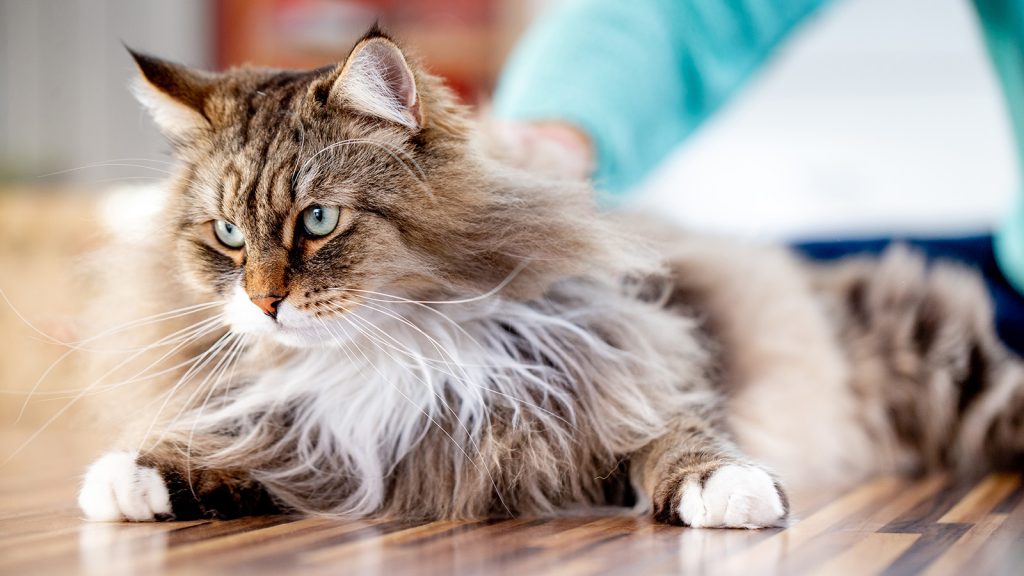
Shedding and Hairball Management in Cold Months
Though shedding is typically associated with spring and fall, long-haired cats often experience increased hair turnover during winter due to undercoat development and stress from indoor heating. The constant grooming cats perform to stay clean leads to hair ingestion, which is more problematic in long-haired breeds.
If you notice more hairballs in winter, it’s a sign that your cat is ingesting excess fur from either a denser coat or insufficient brushing. Hairballs are more than a nuisance; in some cats, they can lead to constipation, vomiting, and even dangerous intestinal blockages. Brushing your cat regularly reduces the amount of loose hair they consume and keeps their digestive system functioning smoothly.
Grooming also provides an opportunity to monitor your cat’s physical health. During brushing, you may detect weight loss hidden beneath thick fur, feel for lumps or injuries, and check for parasites like fleas, which can still thrive indoors during winter. Grooming, then, is a proactive health screening tool—not just a beauty ritual.
Making Winter Grooming Comfortable and Stress-Free
Some cats resist grooming, especially if they associate brushes with pain from tugging or prior mat removal. Winter grooming should be introduced gradually and positively. Start with short, daily sessions and use treats or petting to build trust. Always brush in the direction of hair growth and avoid tugging on knots. If mats are too dense to remove at home, consult a professional groomer or vet—don’t cut them with scissors, which risks injuring the skin.
Warm up grooming tools slightly in your hands before use; cold metal can be startling to your cat. Create a quiet, warm, and distraction-free space for grooming sessions, ideally after meals when cats are calmer. If your cat tolerates it, a warm, damp microfiber cloth can be used to wipe down their coat occasionally, removing dander and helping with light grooming.
Cats are masters of self-care, but winter pushes the limits of their grooming ability. Long-haired breeds, in particular, rely on our help to stay comfortable beneath their thick coats.
Grooming Is Bonding in Disguise
For many cats, grooming becomes a quiet time of bonding. In winter, when cats are more sedentary and prone to huddling in warm spots, grooming offers an interactive way to break up boredom and maintain trust. Brushing mimics the sensation of a mother cat’s tongue, reinforcing affection and calming anxious behaviors brought on by changes in routine or weather.
If your long-haired cat has never enjoyed grooming before, winter is the perfect time to reintroduce it gently. Use positive reinforcement, find the tools they tolerate best, and make it part of your shared daily ritual. The result isn’t just a healthier coat—it’s a happier, closer relationship with your feline companion.
Conclusion: Comfort in Every Stroke
Winter grooming for long-haired cats is about much more than maintaining a picture-perfect appearance. It’s a vital health practice that ensures comfort, prevents pain, and supports skin resilience during one of the most challenging seasons for both pets and owners. Breed-specific needs, seasonal coat changes, and environmental factors all require us to adjust our approach and deepen our understanding of feline care.
In every brushstroke lies not just hair removal—but a whisper of care, a moment of trust, and the preservation of well-being. This winter, don’t let the cold hide your cat’s grooming needs. Embrace them with knowledge, consistency, and love.



